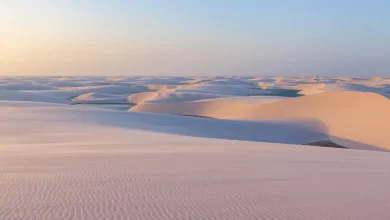Soil is often overlooked, yet it plays a crucial role in our ecosystem. From supporting plant life to influencing climate change, soil is much more than just dirt beneath our feet. Here’s a unique look at some intriguing facts about soil.Soil is a living, dynamic ecosystem. A single teaspoon of healthy soil can contain more microorganisms than there are people on Earth. These microorganisms include bacteria, fungi, and protozoa, which play essential roles in nutrient cycling and organic matter decomposition.
- Soil is a living ecosystem with more microorganisms in a teaspoon than there are people on Earth.
- The most prevalent types of soil include:
– Sandy soil: Characterized by its light, warm, and dry nature, sandy soil tends to be acidic and lacks essential nutrients.
– Clay soil: Known for its heavy texture, clay soil is rich in nutrients, making it fertile but challenging to work with.
– Silt soil: This type is light and excels at retaining moisture, boasting a high fertility rating.
– Loam soil: It leaves a fine layer of particles at the bottom of a water container, complemented by a thin layer of lighter particles on the surface.
– Peat soil: Similar to loamy soil, peat soil contains a greater proportion of lightweight particles that float on the water’s surface.
– Chalk soil: This soil type imparts a grey tint to water, with white or grey particles settling at the bottom. - Soil layers include the O Horizon (organic matter), A Horizon (topsoil), B Horizon (subsoil), and C Horizon (parent material).
(i)O horizon
The topmost layer, made up of organic matter like decomposing plant litter and humus.
(ii)A horizon
Also known as topsoil, this layer is a mix of organic matter and minerals. It’s the start of true mineral soil.
(iii)B horizon
Also known as subsoil, this layer is made up of mostly fine material that’s been pushed down from the topsoil. It’s denser and more compact than the topsoil, and contains less organic matter.
(iv)C horizon
Also known as parent material, this layer is made up of weathered rock and is located just above bedrock. It’s the least weathered layer of soil.
The thickness and presence of these layers depends on the climate, vegetation, and age of the soil. - Soil formation takes hundreds to thousands of years, influenced by parent material, climate, organisms, topography, and time.
- Soil stores more carbon than the atmosphere and all plant life combined, making it crucial for climate regulation.
- There are over 70,000 different types of soil in the United States, including sandy, clay, silt, and loamy soils.
- Soil provides essential nutrients and water to crops, supporting agriculture and food security.
- Only approximately 7.5% of the Earth’s surface is comprised of agricultural soil that supports our global food supply. This limited resource often faces competition from various other essential needs, such as housing, urban development, educational institutions, healthcare facilities, retail spaces, and waste management sites.
- Soil acts as a natural filter, purifying water as it percolates through layers, especially in wetlands.
- Soil erosion and degradation, caused by water, wind, and human activities, lead to the loss of fertile topsoil.
- The United Nations estimates that we have sufficient soil remaining for only 80 to 100 more harvests, which translates to approximately 45 to 60 years of sustainable agriculture.
- Soil is a source of life-saving medicines, including antibiotics like streptomycin and tetracycline.
- Soil holds cultural and historical significance, often associated with fertility, life, and sustenance in various cultures.
- Soil supports plant growth by providing a medium for roots and supplying essential nutrients.
- Healthy soil improves water retention and reduces the need for irrigation.
- Soil biodiversity is crucial for ecosystem services like nutrient cycling and pest control.
- Soil pH and texture influence the types of plants that can grow in it. The optimal soil pH for the majority of plants ranges from 6 to 7.5. This range facilitates the availability of essential nutrients for plant growth.
- Composting and organic farming practices improve soil health and fertility.
- Soil erosion can be mitigated through practices like contour plowing and terracing.
- Urbanization and industrial activities can lead to soil contamination.
- Soil testing helps determine nutrient deficiencies and appropriate fertilization.
- Cover crops prevent soil erosion and improve soil structure.






